Have you ever seen a waterfall famous not for its height, but for it’s length?
Los Saltos del Mocona, or the Mocona Falls, in Argentina, run parallel with the river for nearly three kilometers, making them a truly unique geographical formation.
This post is a complete guide to help you go off the beaten path to Mocona.
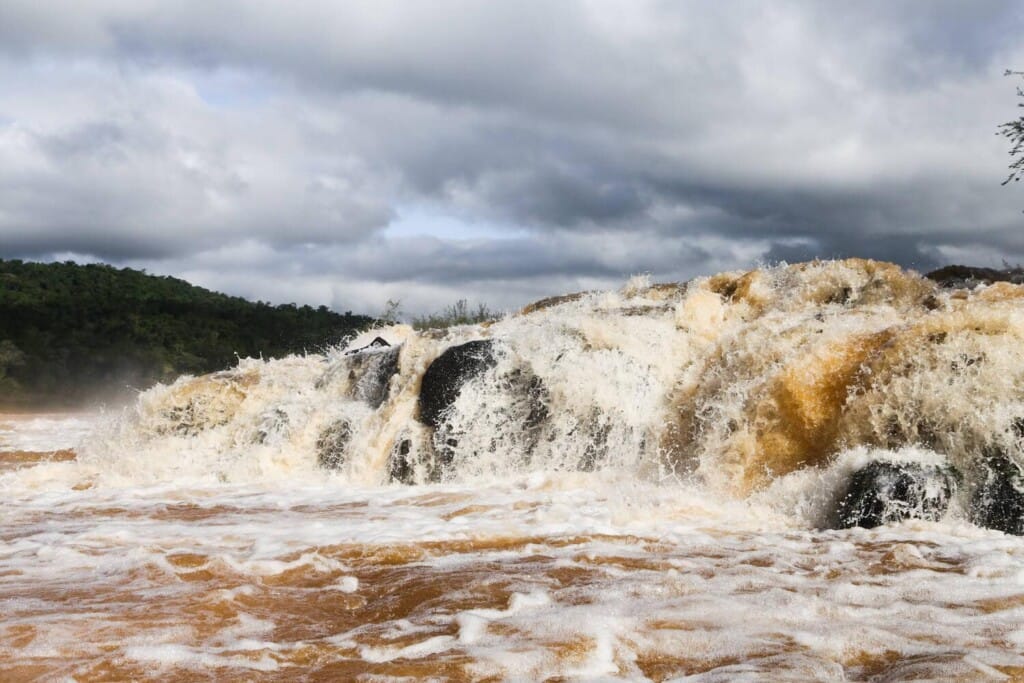
QUICK NOTE: This post contains affiliate links and Sol Salute may receive a commission for purchases made through these links, at no extra cost to you.
NOTE ON TOUR OPERATORS: I link to tours on three tour aggregators – GetYourGuide, Viator, and Tangol. All are reputable. I do my best to find the most affordable option of the three but prices and availability can vary.
Los Saltos del Mocona
Argentina’s northeastern province of Misiones is filled with waterfalls, from Iguazu to countless smaller falls that dot the jungle landscape.
And out of all these waterfalls Mocona Falls stand out.
Los Saltos del Mocona are unique because they run the length of the river for to 2-3 kilometers.
There is a fault line that divides the Uruguay River. When water levels are low, the water from one-half of the river crashes down into the lower half of the fault line.
If the river is high, the water level of both sides of this fault line level out and the falls disappear.
During dry season, the falls can reach up to 8 meters (or even more if we’re talking drought).
The indigenous Guarani people named these powerful falls Mocona, which translates to “that which swallows everything.”
And they weren’t wrong.
Running the length of the river between Argentina and Brazil, the water gushes with such force that it’s as if it’s swallowing everything around it.
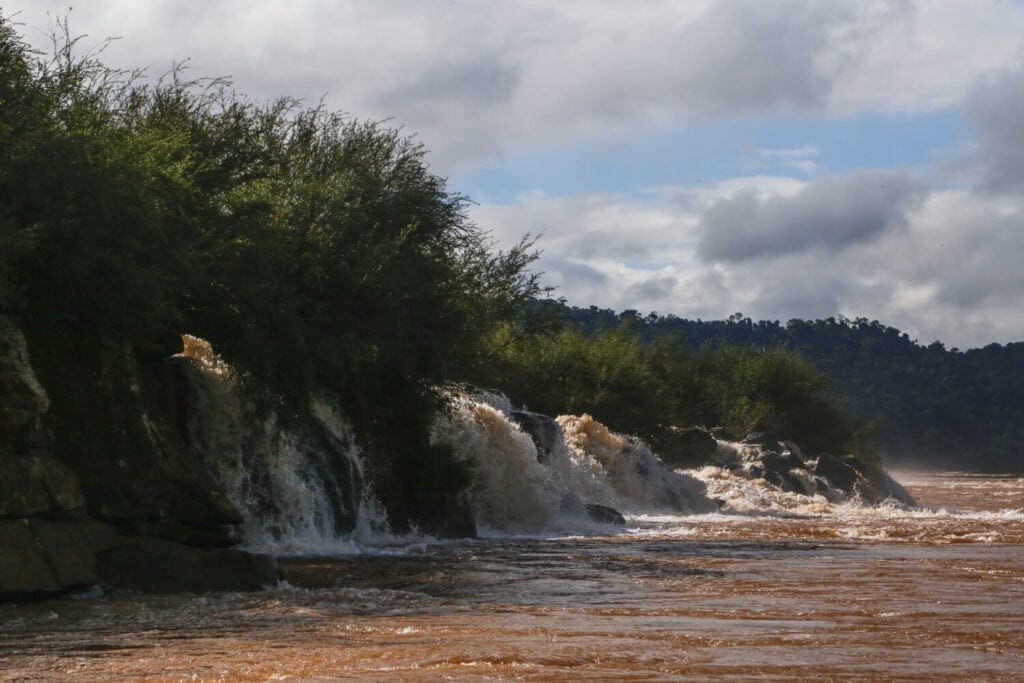
When to see the Saltos del Mocona
Since visibility depends on the water level, which can change from day to day, seeing these falls is never guaranteed.
To see Mocona Falls, conditions have to align perfectly.
The creek that feeds into the Uruguay River needs to be low enough for boats to get in to reach the dock.
Water levels will also affect how much of the falls you actually see, as these falls are famous for their length, not height.
We visited at the beginning of the rainy season and only got to see them at 2-3 meters in height.
At the peak of the dry season, you may get lucky with 7-8 meters.
To allow yourself the best chance of seeing the Mocona Falls, stay in the area for at least a few days.
There is a lot to do in the area and you’ll be glad for the extra time.
We spent two nights here but a third would have been ideal.
Read about how we spent our days in Misiones here.

How to see The Mocona Falls
The only way to see the falls is by a boat tour.
They depart from the dock inside the park and from Mocona Virgen Lodge’s dock.
Always check the official website here to see if it’s habilitado (open) before planning your day.
They update the page every morning with whether the park and/or paseo nautico (boat trip) is open or closed. It changes each day and won’t be announced until the morning of.
The boat tour cost us around the equivalent of $25 US.
It lasts an hour and a half in total in a small speed boat that jets down the Uruguay River by the falls.
You won’t get soaked but if you’re bringing an expensive camera it’s a good idea to have a light jacket or something to cover it from the mist when the boat gets near the falls.
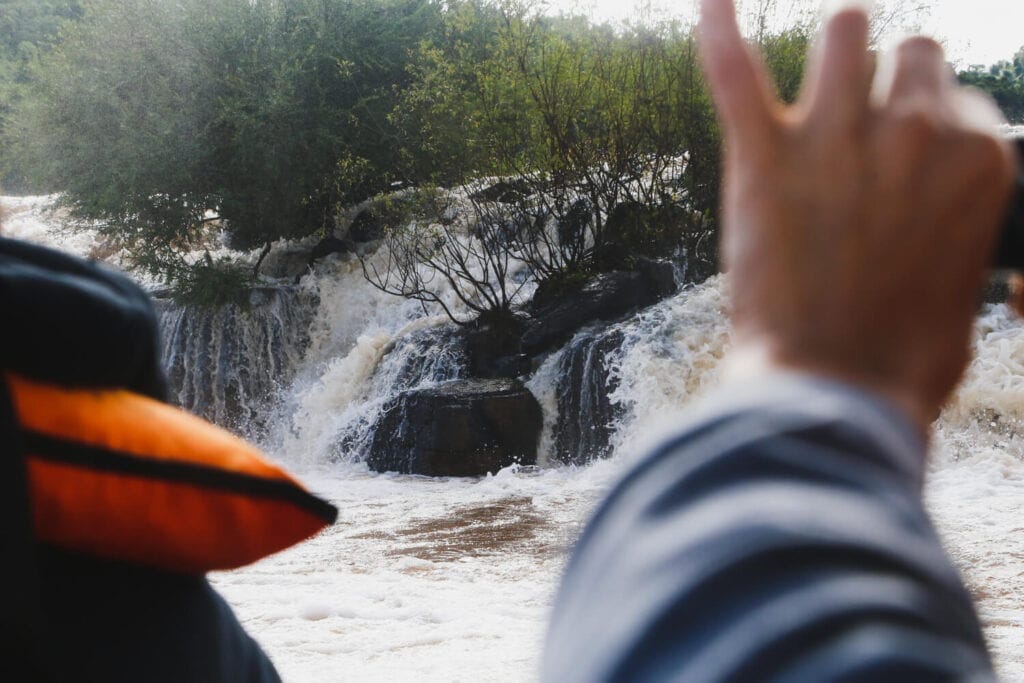
Mocona Falls Accommodation
The closest town to use as a base is El Soberbio.
There are a lot of cabins for all budgets here. The drive from El Soberbio to the Mocona National Park takes thirty minutes but the views are beautiful!
The drive runs parallel to the river and there are a number of viewpoints to stop at along the way.
Click here to search for Mocona Falls accommodation near El Soberbio.
Mocona Virgin Lodge by DON
We stayed for two nights at the Mocona Virgin Lodge.
It was a bit of a splurge for us but was well worth it.
This lodge is located inside the Yabotí Biosphere Reserve, there is literally no better place to stay to see the falls.
The room rate includes full board (breakfast, lunch, and dinner) and activities including kayaking, zip-line, and hiking trails through the jungle.
The best part about the Virgen Lodge (aside from their tree-house-like rooms) is that the boat excursions depart from the hotel property.
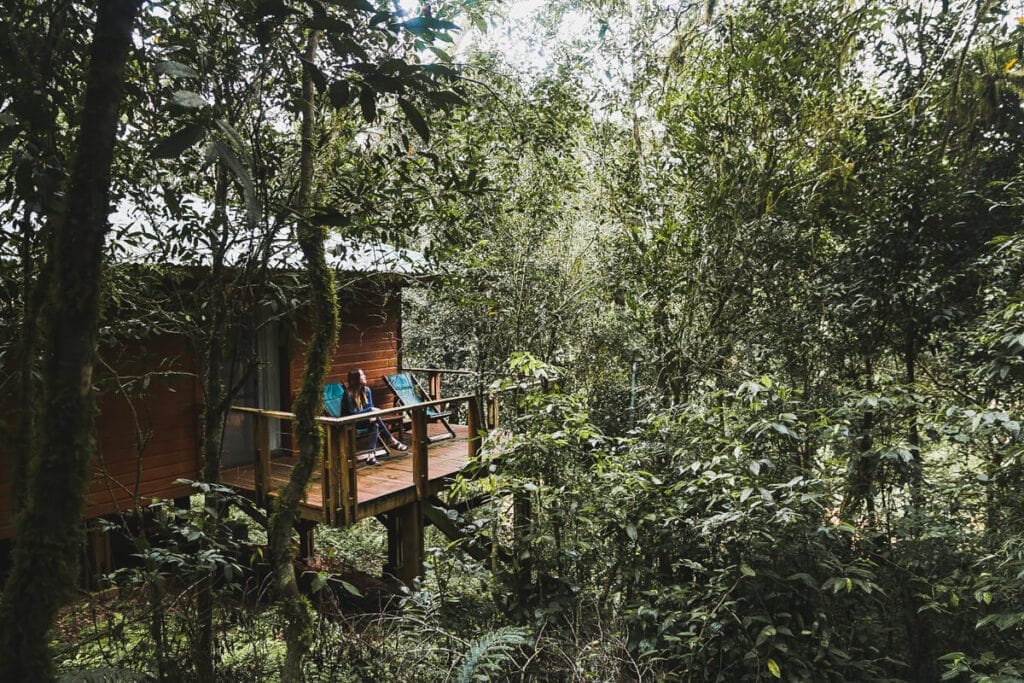
Due to water levels while we were there the boats couldn’t reach the dock in the national park and could only depart from our hotel’s dock.
As guests, we were given priority and put on the first tour.
We almost didn’t get to see the falls at all, before we arrived it had rained for days and the water levels were rising.
The day after we left the water would be too high to see the falls at all. The hotel staff kept us up to date all day regarding the status of the falls and made sure we saw them.
We were lucky to be there the one day it didn’t rain with visible falls. It really is just luck, this is why it’s best to stay for at least a few nights.
Check rates and availability here.
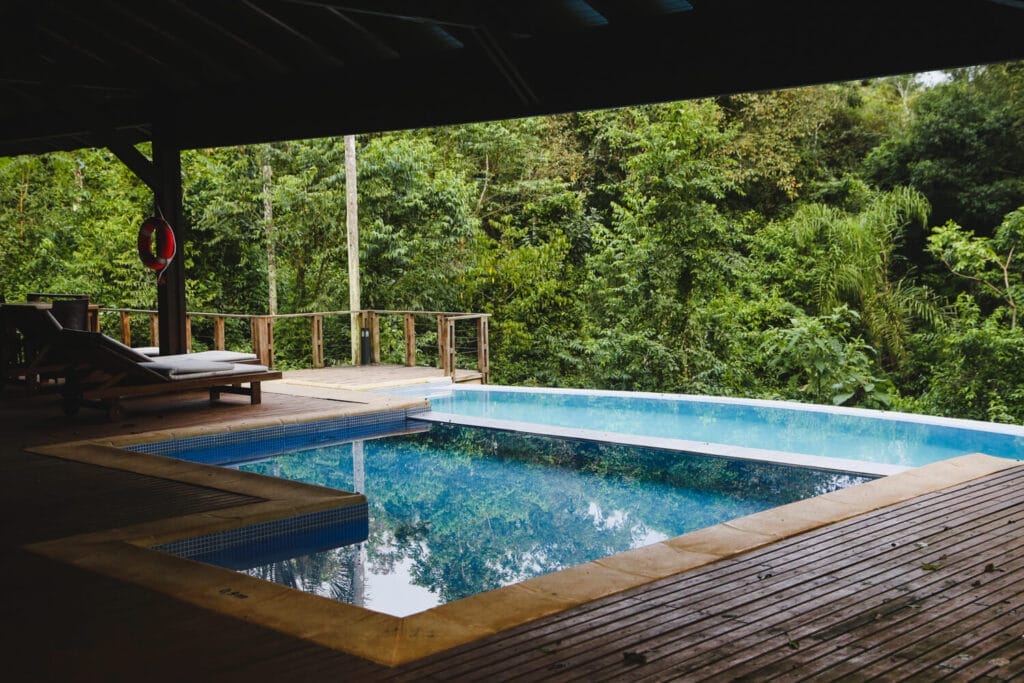
Chacra del Agua: Affordable Mocona Cabins
Like the Mocona Virgin Lodge, the small cabins at Chacra del Agua are also located inside the nature reserve.
They were my second choice for hotels near Mocona Falls, but I was won over by our hotel’s full board option.
Chacra del Agua is a more affordable option but with the same beauty and ideal location as the Virgin Lodge. They have cabins for couples and families, so it’s great for everyone.
Check rates availability here.
Pin it for later
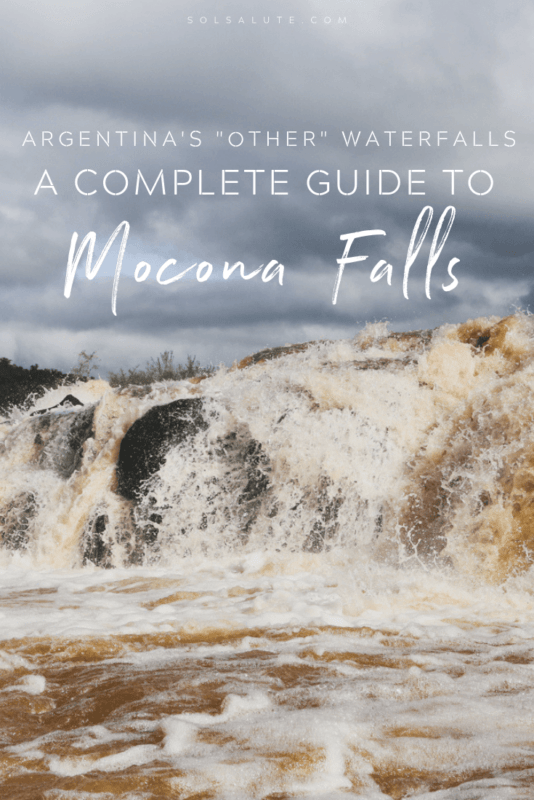
Argentina Travel Resources
- BOOK A CONSULTATION | I offer one-on-one travel consultations to help you plan your trip to Argentina. Pick my brain to get a local’s insight. Click here for more information.
- MY MAP | Buy my interactive map with 300+ pins to have access to the city as I see it. It is an invaluable resource. See more here about how it works.
- AIRPORT TRANSFERS | Having a driver waiting for you is ideal for a stress free arrival, Welcome Pickups is the best option for a driver from Ezeiza or Aeroparque.
- TRAVEL INSURANCE | Always travel insured. Anything can happen anywhere and it is scarier and costlier in an unfamiliar country. SafetyWing’s Essential Plan covers unexpected travel and medical emergencies and even offers add-ons like electronics theft or adventure sports. It is the best if you’re coming on vacation. If you’re coming as a digital nomad or an extended stay, you need their Complete Nomad Plan which also covers routine check ups, maternity, mental healthcare and more. Read more: Health Insurance in Argentina
- PHONE PLAN | These days, traveling with data is essential. Especially in Argentina where everything is managed on Instagram and WhatsApp. I recommend this E-SIM card. It’s hassle-free and affordable, for more read how to get an Argentina sim card.
- ACCOMMODATION IN ARGENTINA | booking.com is the most common hotel site used in Argentina and it’s where you’ll find the most options.
- RENTAL CARS | I love to travel Argentina via road trip, Discover Cars is a great platform to compare different rates and providers.
- BUS TICKETS | Check Busbud for long distance bus routes and tickets.
- VPN | If you’ll be using a public WiFi connection and want to secure your data, I highly recommend using a VPN, I personally use and have had a good experience with ExpressVPN. I also use it to access Hulu and American Netflix from Argentina.
- FLIGHTS | Always check Google Flights and Skyscanner for flights to and within Argentina. Aerolineas Argentina is the local airline with the most routes. FlyBondi and Jetsmart are two budget airlines with dirt-cheap prices (but expect to pay for every add-on like luggage).


